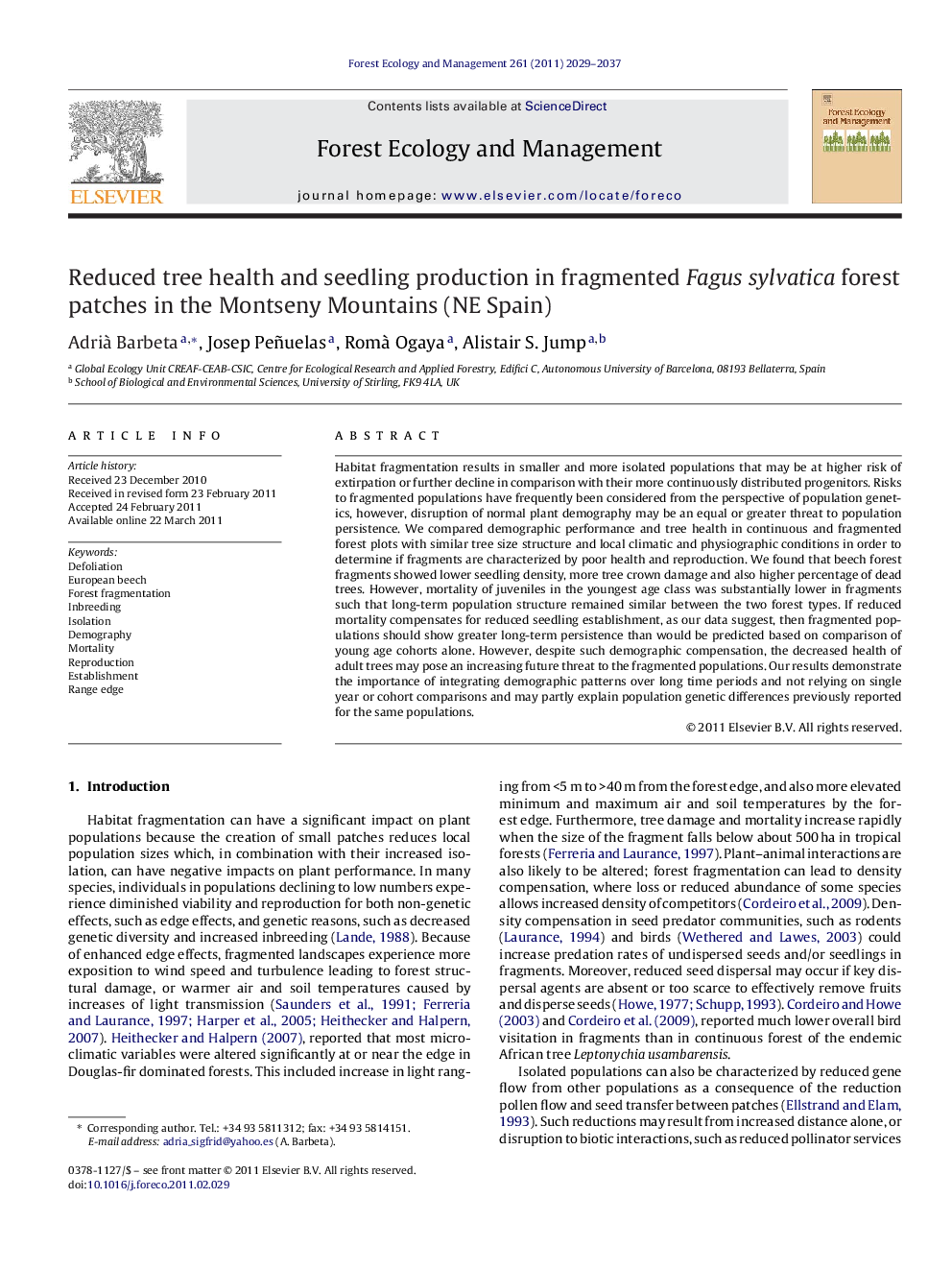| Article ID | Journal | Published Year | Pages | File Type |
|---|---|---|---|---|
| 87893 | Forest Ecology and Management | 2011 | 9 Pages |
Habitat fragmentation results in smaller and more isolated populations that may be at higher risk of extirpation or further decline in comparison with their more continuously distributed progenitors. Risks to fragmented populations have frequently been considered from the perspective of population genetics, however, disruption of normal plant demography may be an equal or greater threat to population persistence. We compared demographic performance and tree health in continuous and fragmented forest plots with similar tree size structure and local climatic and physiographic conditions in order to determine if fragments are characterized by poor health and reproduction. We found that beech forest fragments showed lower seedling density, more tree crown damage and also higher percentage of dead trees. However, mortality of juveniles in the youngest age class was substantially lower in fragments such that long-term population structure remained similar between the two forest types. If reduced mortality compensates for reduced seedling establishment, as our data suggest, then fragmented populations should show greater long-term persistence than would be predicted based on comparison of young age cohorts alone. However, despite such demographic compensation, the decreased health of adult trees may pose an increasing future threat to the fragmented populations. Our results demonstrate the importance of integrating demographic patterns over long time periods and not relying on single year or cohort comparisons and may partly explain population genetic differences previously reported for the same populations.
► We compared continuous and fragmented Fagus sylvatica forests ► We examined demography and tree health of populations located at a short distance. ► Forest remnants showed reduced tree health and reproduction. ► Seedling and juvenile mortality were higher in continuous forest. ► Effects of fragmentation on reproduction may be prevented by low seedling mortality.
